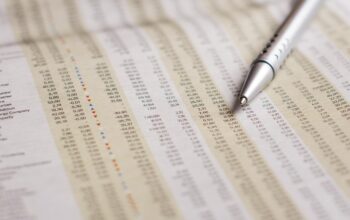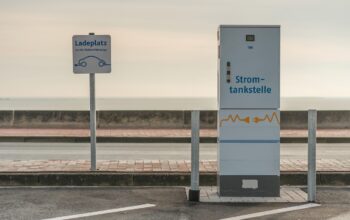Ever tried explaining environmental sustainability to your neighbor using fancy business jargon? Chances are, their eyes would glaze over before you finished the first sentence. But when you tell them about companies swapping plastic bags for compostable ones, or coffee shops measuring their carbon footprint with lasers and AI, suddenly, sustainability becomes more than a buzzword—it’s an adventure happening right now. Here’s a look at five trending interviews and stories about companies, innovators, and investors who are rolling up their sleeves and changing the game in environmental sustainability. These aren’t just theories. They’re real-world journeys of trial, error, and triumph.
Hooking the Audience with Real-Life Drama Take Kite Packaging, a British packaging giant that’s 100% employee-owned. They didn’t start out as the poster child for eco-friendly packaging. But as their spokesperson puts it, ‘The packaging you use is no longer just practical, it’s a statement.’ Customers are more informed than ever, demanding transparency and green alternatives from the brands they trust. Kite’s story is about a company that listened to its employees and customers, pivoted hard into sustainability, and is now setting trends for the entire industry. It’s a classic tale of survival: adapt or risk losing relevance.
Turning Backyard Ideas Into Mainstream Models Next, consider how nature-based strategies for businesses have moved from the fringes to the core. The interviewees at IMD research center have been chatting with executives who once considered biodiversity an issue for tree-huggers. Today, those same leaders see protecting nature as a business lifeline. Companies like Oatly, the oat milk brand, are publishing detailed plans to cut climate emissions and boost biodiversity. Oatly’s not just talking about being green—they’re showing the world how it’s done, one carton at a time. Their secret? A new model called ‘Spheres of Influence’ that tracks and accounts for every impact, big or small.
Leadership That Speaks Louder Than Reports Then there’s the perspective from the top. Geraldine Matchett, co-CEO of Royal DSM, a Dutch nutrition giant, argues for a shift to regenerative agriculture in interviews. She explains that feeding a growing global population without wrecking the planet isn’t just about swapping old ways for new—it’s about redesigning the entire food chain from the ground up. This is the kind of real-world leadership that turns abstract sustainability goals into practical, on-the-farm solutions.
Investor Muscle and the Sustainability Race BNP Paribas’ latest ESG Survey gives voice to institutional investors who are putting their money where their mouths are. These aren’t your stereotypical old-school bankers. They’re looking beyond the bottom line, embracing holistic approaches that link climate action, biodiversity, and social impact. Interviews and panel discussions with these investors reveal that sustainability is no longer seen as a constraint on profits—instead, it’s a wellspring of innovation and opportunity. As one investor put it, ‘We’re not just avoiding bad companies. We’re hunting for the ones that will define the next era.’
The Consulting Arms Race for a Greener Future Finally, the consulting world is going full throttle on sustainability. As reported by The Business Research Company, ESG consulting is booming—from $10.4 billion in 2024 to an expected $11.9 billion in 2025. Experts in the field are sharing stories of companies that initially saw sustainability as a chore, only to discover that green strategies can drive growth, attract talent, and win over investors. These consultants are the unsung heroes who help companies untangle complex regulations, set meaningful targets, and communicate their wins in a way that doesn’t sound preachy or vague.
Making Sense of the Sustainability Puzzle So, how are these interviews and stories changing the conversation? Think of them as puzzle pieces that, when put together, show a bigger picture. Each story—whether it’s about a packaging company, a food giant, or an investor—adds color and context to what it really means to be sustainable in today’s world. Here are some recurring themes and powerful takeaways:
- Consumers are driving change: Gone are the days when companies could slap a ‘green’ label on a product and expect applause. Today’s customers ask tough questions about sourcing, packaging, and impact.
- Transparency is the new gold standard: Brands like Oatly are proving that detailed, honest reporting builds trust and loyalty.
- Investors are voting with their wallets: Sustainable investing is no longer a niche—it’s the mainstream, and it’s reshaping entire industries.
- Real innovation comes from real stories: Companies that share their journeys—the good, the bad, and the ugly—are the ones leading the way.
- Consultants are the secret sauce: They help companies navigate the maze of sustainability, turning confusion into clarity and action.
Wrapping Up: Sustainability Is Everybody’s Job At the end of the day, environmental sustainability isn’t just for tree planters and policy wonks. It’s for business leaders, baristas, bankers, and anyone who cares about the world we live in. The interviews and insights from these leading voices prove that change is possible, practical, and even profitable. All it takes is the courage to try, the humility to learn, and the willingness to tell your story. So, if you’re thinking about making your company greener, start with a conversation—and remember, the best stories are the ones that inspire others to join the journey.
References:
- https://www.imd.org/ibyimd/sustainability/are-you-ready-for-a-bright-green-future/
- https://www.einpresswire.com/article/816142496/key-trend-in-the-environmental-social-governance-consulting-market-next-gen-esg-tools-empower-sustainable-practices
- https://northeast.newschannelnebraska.com/story/52789781/the-rise-of-sustainable-packaging-kite-packaging-reveals-2025-trends-every-business-should-know
- https://www.imd.org/beta-ibyimd/sustainability/13-sustainability-trends-driving-business-in-2023/
- https://securities.cib.bnpparibas/esg-survey-2025/
- https://www.gatesnotes.com/books/reading-lists/reader/summer-books-2025
- https://vegconomist.com/category/sustainability-environment/
- https://elkhartindiana.org/wp-content/uploads/Elkhart-2025-2029-Consolidated-Plan-Current-draft-5_19.pdf



